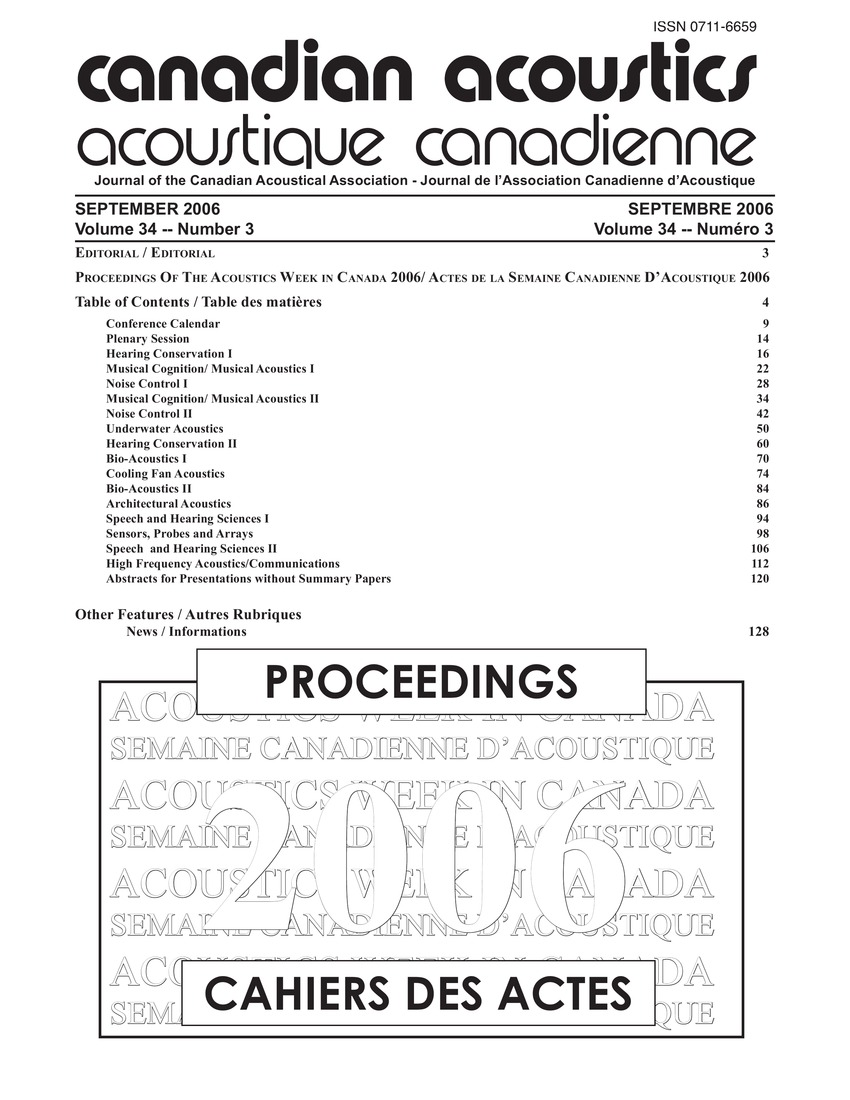Impulse noise hazard - What do we know about it?
Keywords:
Algorithms, Bone, Hazards, Mathematical models, Muscle, Personal computers, Basilar membrane, Hearing hazard, Impulse noise hazardAbstract
The auditory Harard Assessment Algorithm for Human (AHAAH) was created to define impulse noise and to provide a tool that would make an assessment of the hearing hazard from impulse noise levels above 150 dBPeak. A mathematical model of the entire ear, including the external, middle, inner parts, muscles, and bones was created. The ultimate receptor of noise, the basilar membrane was divided into 23 locations, in the model. It was found that the basilar membrane oscillates, when the impulse is entered in the model. The upward flexes for each of the 23 locations were tracked, their amplitude in microns was squared, and the sum for each location was maintained. The model operated on a personal computer (PC) in WINDOWS environment and the waveform of the signal to be assessed, was entered in the program as an ASCII file. The AHAAH method has been tested in animals and validated in human and was found to be correct in 95% of the tests, with protected hearing.Additional Files
Published
How to Cite
Issue
Section
License
Author Licensing Addendum
This Licensing Addendum ("Addendum") is entered into between the undersigned Author(s) and Canadian Acoustics journal published by the Canadian Acoustical Association (hereinafter referred to as the "Publisher"). The Author(s) and the Publisher agree as follows:
-
Retained Rights: The Author(s) retain(s) the following rights:
- The right to reproduce, distribute, and publicly display the Work on the Author's personal website or the website of the Author's institution.
- The right to use the Work in the Author's teaching activities and presentations.
- The right to include the Work in a compilation for the Author's personal use, not for sale.
-
Grant of License: The Author(s) grant(s) to the Publisher a worldwide exclusive license to publish, reproduce, distribute, and display the Work in Canadian Acoustics and any other formats and media deemed appropriate by the Publisher.
-
Attribution: The Publisher agrees to include proper attribution to the Author(s) in all publications and reproductions of the Work.
-
No Conflict: This Addendum is intended to be in harmony with, and not in conflict with, the terms and conditions of the original agreement entered into between the Author(s) and the Publisher.
-
Copyright Clause: Copyright on articles is held by the Author(s). The corresponding Author has the right to grant on behalf of all Authors and does grant on behalf of all Authors, a worldwide exclusive license to the Publisher and its licensees in perpetuity, in all forms, formats, and media (whether known now or created in the future), including but not limited to the rights to publish, reproduce, distribute, display, store, translate, create adaptations, reprints, include within collections, and create summaries, extracts, and/or abstracts of the Contribution.


